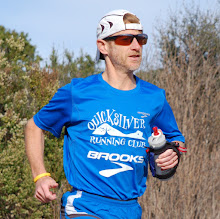It had been 3 years since I've been on the African continent, it was about time! And, yes, last time was in South Africa. Saying this because, when I was sharing that I was going to visit Gabon, in Africa, quite a few colleagues could only register that I was going to... South Africa. Like that was the only country in Africa... Indeed, from an IBM standpoint, business mostly happens in South Africa, although we also have presence in other countries such as Kenya, actually with a Research Center, Senegal and several North African countries. In my quest to visit at least 100 countries, Gabon was going to be #69. More specifically in Africa, I have already visited: Morocco, Tunisia, Senegal, Ethiopia, Djibouti, Namibia and, yes, several times, South Africa.
So let's talk a bit about Gabon with a few facts to situate it within a list of 54 African countries.
- Geography. Gabon is part of the Equatorial Africa. As a matter of fact, the Equator crosses Gabon a few miles South of the capital, Libreville. It's the 30th African country from a size standpoint but only 44th, population wise. Rather a small country then.
- History. Marked by 75 years of French colonization, which made French as the official language. Then 50 years of ruling by the Bongo family until the recent military coup 2 years ago.
- Economy. Sizable access to natural resources although little trickles down to the population. While the GDP per capita is high, thanks to a low population, most of the country is really poor and that translates into a high plastic pollution of beaches in particular, harming tourism. The new rulers pour a lot of money in gigantic infrastructure and building projects although it's very unclear how financially sustainable this is. July 15 marked the beginning of the tourism caravan, a 2-month initiative to promote tourism to foreign representatives. Some marketing effort but mostly something very superficial and hiding the limitations behind the scene.
- Weather. In July, it was supposed to be the dry season but we rarely saw the sun, another consequence of climate change. Being on the equator, it's humid all year around, and the length of daylight is constant at 12 hours, from about 6 to 6. Libreville facing West, there are spectacular sunsets but it was cloudy every day for us. Gabon, like all other African countries except Egypt, does not change time throughout the year so it's 9 or 10 hours ahead of Pacific time for instance.
- Culture. Like most places in Africa, time has a different appreciation and meaning. It's especially noticeable every time you expect some service like at restaurants, or airports. Between the colonial scars, and the occidental ties of the previous rulers, white people aren't really welcome. You need to pay special attention NOT to take pictures of any official staff or building and, in general, people don't like to get in your pictures, or at least they expect some money.
- Infrastructure. I mentioned recent big investments. Otherwise, the roads are good along the ocean between downtown and the upper scale neighborhood of La Sablière, but that's it. While I haven't visited much of the country, I was told most roads are dirt roads otherwise. If any road at all. And we've seen first hand what bumpy dirt roads can be on our way to a camp on the Nyonié (where we saw elephants in the wild!). With limited roads, alternatives include boats, like the one we took for an hour to cross the estuary, or planes (which are expensive given the small size and limited traffic/availability). In the city, many cars, motorbikes, taxis and minibuses for the locals.
[Source: worldatlas]
[Source: Statista]As I mentioned earlier, the safest neighborhoods are along the ocean. I could say the beach but, with the proximity of the estuary, and most sewages going straight into the sea, not to mention the mountains of plastic garbage, even locals don't really go for a swim. Frustrating when you see these sandy beaches so accessible from the city. Like if you couldn't enjoy the beach in Barcelona!
So, if beaches aren't for swimming, at least you can use them to run for a few miles. Between high tides at least. And, at times, having to circumvent a rocky section between beaches, or a river without a bridge. Included in these rivers are pools forming at high tide and releasing water after the tide changes. The local book "Pratique du Gabon" is a useful resource to get the tide times. You can also simply either run through the water, or, more time consuming, remove your shoes and put them back...
My run started in La Sablière which is about 10 kilometers (6 miles) north of downtown, or 6 kilometers from the upscale Radisson Blu Okoumé hotel.
Here is the flyover, with pictures and video clips (click on the image below or this link):
And a few sill pictures.
Not directly related to that run, starting with cool encounters at the camp on the Nyonié:
Back to the beach near La Sablière:
The fishermen are back with fresh fish!
First river to cross, after high tide.
Goat farm.
Another strong river just before/below Santa Clara Cap, I turned back.
Happy and proud dad!
The bridge on the larger river.
Ne fees for pedestrians, phew!



































No comments:
Post a Comment